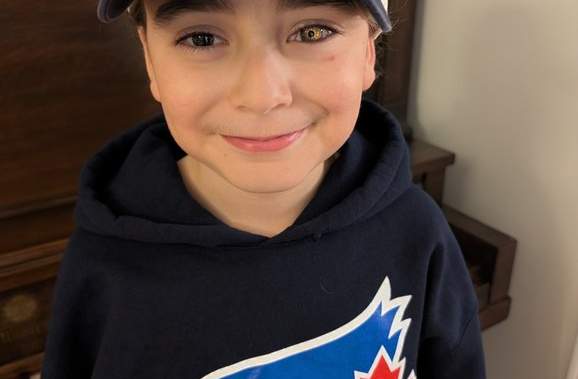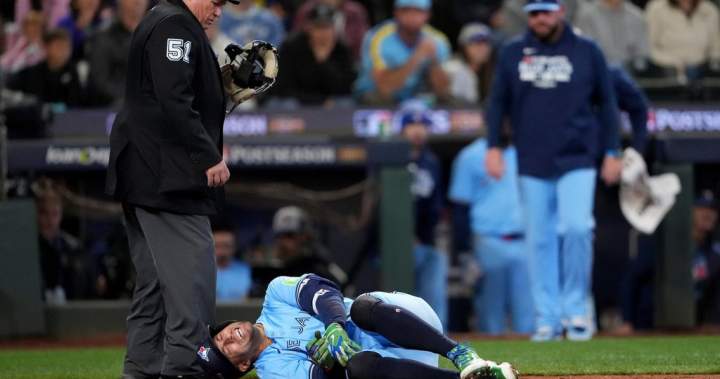Metrolinx spent $21K entering its own communications team into awards

Ontario’s provincial transit agency is facing criticism and questions — including from the minister responsible for its work — after spending tens of thousands of dollars entering its own public relations content into awards programs.
Metrolinx, which runs the GO Transit network and leads the government’s transit expansion projects, has a large communications team responsible for promoting its work in Toronto and southern Ontario.
Data shared by the agency with Global News shows its communications department has spent $21,483.93 in the last year entering into various awards.
“No prize money was generated,” a spokesperson said.
In a statement, Metrolinx said it had entered nine communications awards programs in various categories, “including public service, education and discovery, history, and social responsibility.”
A spokesperson for Transportation Minister Prabmeet Sarkaria blasted the agency for its spending and said his office would immediately order them to stop after learning about the costs through questions from Global News.
“This is an unacceptable use of taxpayer dollars and Minister Sarkaria has sent a letter to direct Metrolinx to immediately stop all entries going forward,” the spokesperson wrote in a statement.

Get daily National news
Get the day’s top news, political, economic, and current affairs headlines, delivered to your inbox once a day.
“We are delivering the largest transit expansion in North America and Metrolinx needs to remain focused on building the critical infrastructure our growing province needs.”
Metrolinx confirmed the money spent came from its existing communications budget and defended the move as necessary for its professional development.
“It is standard for public and private sector organizations to apply to award programs as part of their communications practices,” a spokesperson for the transit agency said.
“Investment in awards consideration is similar to investments in training or technology — the entry process encourages teams to reflect, measure outcomes, and articulate the impact of their communications.”
Commercials and other marketing materials from Metrolinx may also have been entered into awards, the agency said, but those entries would have been done by the companies contracted to produce the commercials and therefore would not have cost the taxpayer.
The transit agency is responsible for working on projects like the Eglinton Crosstown LRT and the Finch West LRT, neither of which has an official opening date. Metrolinx, whenever asked, has refused to disclose them.
Ontario Green Party Leader Mike Schreiner said the Metrolinx communication team should focus on pushing out information on existing, delayed projects rather than entering into awards.
“The communication on the Eglinton Crosstown has been horrendous, so I can’t imagine them winning an award for communications that have essentially said we want to communicate that we have nothing to communicate,” he said.
Metrolinx also recently saw a deal that was supposed to run for almost a quarter of a century fall apart less than three years after the initial paperwork was signed.
It said it was working on an “amicable settlement” to end that contract — but has declined to answer questions about the cost or why the deal fell apart.
© 2025 Global News, a division of Corus Entertainment Inc.


TORONTO – Eight-year-old Logan Dorna is cheering on the Blue Jays in their playoff run while sporting their logo on his prosthetic eye.
Logan’s left eye was removed at the Hospital for Sick Children in Toronto after he was diagnosed with retinoblastoma — an eye cancer — when he was six months old.
Matthew Milne, an ocularist who works with the hospital’s eye cancer team, made Logan’s first artificial eye as a baby and replaces it with a new one about every two years as he grows up.
When Logan came to see Milne a couple of weeks ago for his next prosthetic eye, he had something specific in mind.
“I wanted to get the special eye because I like playing baseball and I like watching it too,” he said in a video interview with his parents from their home in Richmond Hill, Ont., on Friday.
Milne, who hand-paints the artificial eyes, made Logan one with a gold iris and baseball seams.
He painted the Blue Jays logo on top of the eye. Unlike the gold and the seams, it’s not possible to make the logo visible to others because the top is tucked back into the eye socket.
Related Videos
But Logan knows it’s there and can show others when he swaps that eye out for a second “everyday” prosthetic eye. That one has a brown iris to match his seeing eye.

Get weekly health news
Receive the latest medical news and health information delivered to you every Sunday.
It also has a special painting on the top that reflects his interests: a character from the “Zelda” video game series.
Milne encourages his young patients to pick fun images for the tops of their prosthetic eyes.
“When you’re dealing with a very kind of adult issue like retinoblastoma, I want to always give kids the opportunity to kind of customize something for themselves, make it fun for them,” he said.
Logan’s mom, Taline Dorna, said her son has been wearing his Blue Jays eye “every time the Jays have been playing because he believes in his soul that it’s giving them a little bit of extra luck.”
The sports theme is also a celebration of how much Logan overcame in the summer when he started playing baseball for the very first time, she said.
“Having just monocular vision, depth perception is really off. So whenever he hit that ball … (it) really gave him that boost of confidence.”
When he’s not batting — Logan’s favourite part of the game — he’s “usually right field but sometimes middle and left,” he said.
Dorna and Logan’s father, Serge, hope that their son’s embracing of his artificial eye inspires other children with differences to feel proud and be welcomed.
“That’s what we’ve always wanted for him … no social stigma attached to having a prosthetic eye because it is such a visible difference,” Dorna said.
“We want him to always feel confident and not ashamed of who he is because it’s part of his identity.”
Logan’s prosthetic eye is connected to ocular muscles so it can move in sync with his seeing eye when he’s looking around, even though there’s no vision there, Milne said.
Retinoblastoma is rare — there were 15 cases in children 14 years and under in 2019 — but it’s the most common type of eye cancer in children and often found under the age of two, according to the Canadian Cancer Society’s website.
Removing the cancerous eye helps prevent the tumour from spreading elsewhere. After Logan’s eye was taken out, he didn’t need any further treatment such as chemotherapy or radiation, his mother said.
He now goes for checkups at SickKids’ eye clinic once a year and sees Milne every few months to maintain his prosthetic eye.
This report by The Canadian Press was first published Oct. 18, 2025.
Canadian Press health coverage receives support through a partnership with the Canadian Medical Association. CP is solely responsible for this content.
© 2025 The Canadian Press

A new clinical trial at Kingston Health Sciences Centre could mark a turning point in how anxiety is treated in Canada.
For the first time in Canada, researchers are studying the effects of micro-dose psilocybin, the active ingredient found in magic mushrooms, on people living with generalized anxiety disorder (GAD).
“There are significant unmet needs among people living with generalized anxiety disorder, and they are seeking effective, well-tolerated treatments,” said Dr. Claudio Soares, principal investigator and attending physician in KHSC’s Mental Health and Addiction program.

Get weekly health news
Receive the latest medical news and health information delivered to you every Sunday.
Psilocybin is being tested for its potential to reduce anxiety without causing hallucinations.
“Not everybody has access to treatment, but also not everybody can tolerate medications for anxiety,” said Soares.
“They might have sexual dysfunction or weight gain. So we’re always looking for novel alternatives, novel treatments, and psilocybin has emerged as one of the options to treat anxiety disorder.”
The study will run over eight weeks and involve up to 60 participants taking either psilocybin or a placebo daily at home.
Researchers say the initial results are encouraging, with some participants noticing reduced anxiety within the first week.
“This study represents a major shift, a new way of targeting anxiety by engaging the brain in novel ways, but without the sedation or emotional numbing caused by many of the current medications used to treat anxiety,” said Soares.
With more than 1.6 million Canadians affected by GAD, researchers are hopeful the trial will offer a safer and more accessible treatment alternative.
If successful, larger-scale studies could follow, bringing new hope to those living with anxiety.
© 2025 Global News, a division of Corus Entertainment Inc.

SEATTLE – Blue Jays designated hitter George Springer left Game 5 of the American League Championship Series due to a right knee injury.
Springer was hit by a 95-m.p.h. pitch thrown by reliever Bryan Woo in the seventh inning of Friday’s game at T-Mobile Park. Toronto led 2-1 at the time.
Springer was replaced in the lineup by Joey Loperfido, who was added to the 26-man roster on Thursday after outfielder Anthony Santander was ruled out with a back injury.
Related Videos
Springer was hit in the side of the knee and immediately crumpled to the ground in the batter’s box. A team trainer, joined by manager John Schneider, came out of the dugout for assistance.

Get daily National news
Get the day’s top news, political, economic, and current affairs headlines, delivered to your inbox once a day.
The 36-year-old Springer got to his feet and tested the leg by slowly walking to first base before deciding to leave the game.
Springer, who drove in Toronto’s first run of the game in the fifth inning, is hitting .256 in the post-season with three homers and six RBIs. He hit .309 in the regular season with 32 homers and 84 RBIs.
Following the game Jays manager John Schneider said X-rays were negative on Springer’s knee.
This report by The Canadian Press was first published Oct. 17, 2025.
© 2025 The Canadian Press
-

 Uncategorized4 months ago
Uncategorized4 months agoShop Proud, Eat Proud, Be Proud — Ottawa Canada Day Market This June 28th
-

 4 months ago
4 months agoRing of Fire road to bring prosperity to First Nation, problems for caribou: report
-

 4 months ago
4 months agoMeasles circulating in northeastern B.C. community, health officials warn
-

 4 months ago
4 months agoCanada’s world junior trial saw juries tossed, intense testimony. Here’s a recap
-

 4 months ago
4 months agoFormer major leaguer, Jays doctor Ron Taylor dies
-

 4 months ago
4 months agoJagmeet Singh apologizes for attending Kendrick Lamar concert after Drake calls him out
-

 4 months ago
4 months agoAnishinabek Nation chief says he briefed Ontario police on protests against Bill 5
-

 4 months ago
4 months ago161 bricks of suspected cocaine found on truck trying to cross Canada-U.S. border








